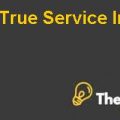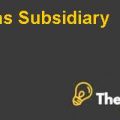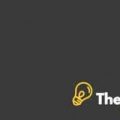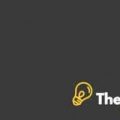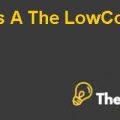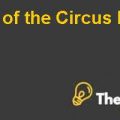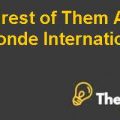
Introduction
Best Buy Co., Inc. was established by Richard M. Schulze in 1996 as a single high quality audio electronics store in St. Paul Minnesota. In the early days of his business, he had started an extensive advertisement campaign through outdoor displays and radio advertisings to attract his very first target market of 18-25 years old technology lovers. However, with the passage of time the company had emerged as a market leader after circuit city in the electronic retail market, with a wider range of product offerings and a network of hundred stores in different countries. By the end of 2005, the company was operating 769 Best Buy stores in the USA and 43 in Canada, 119 Fortune Shops locations, 20 Stand-alone Magnolia Audio- Video stores, 13 standalone Geek Squad outlets in America and four in Canada. Its revenues had got more than doubled in 2002, i.e. increased from $8.3 billion to $19.6 billion. Whereas, in 2005 the sales of Best Buy Co. reached to $27.3 billion, but the third quarter financial reports of the company showed a decrease in the company’s share price and it had faced a market capitalization loss of $2 billion.
Problem Statement
The downfall in the company’s third quarter earnings was attributed to the management’s weak policies related to the aggressive rollout of 144 new “centricity” stores, which was a new concept of retail stores featuring a customer driven business model, which meant that customers should be the top most priority of every retail business. The company had developed these stores with a purpose to meet the increasing concerns from the customers and the threat of increasing competition, but unfortunately it was neither warmly welcomed by the other industry players, i.e. Circuit City, Wall Mart, etc… nor by the customers even though the company had expended a huge capital amount on the conversion of its merchant driven retail stores and concept to the customer driven. The new concept had divided the whole business into three categories: the Store, the Merchant and the Segment, but due to lack of competent supervision to the proposed change from the management, it was failing in synchronization and optimization of the activities of these three business units. Segment leaders had started complaining about the store management because they were unable to meet the demands of the customers belonging to different segments. Whereas, on the other hand the GM and the rest of the store sales personnel were complaining that none of the Merchant leaders and Segment leaders were giving importance to their valuable insights. This had increased the conflicts among workforce along with the cost and expenses, i.e. expenses were increased from 19.5% in 2004 to 21.7% in 2005 due to the convergence program. It had also increased the employee turnover ratio and the company was also unable to hire new and experienced sales associates from the market because of the high labor cost associated with the business oriented sales associates. The new strategy had also faced such a huge failure because it was unable to meet the ego needs of some of the company’s executives, which was a major cause of their criticism and resistance towards the new customer centric strategy. The new Strategy had taken the company far away from its core culture and competencies because after the implementation of this strategy, the company had focused its attention in offering certain targeted value proposition to one or two specific customer segments. Due to the inappropriate planning of the new strategy, the company had faced huge monetary losses and also lost its brand image in the market.
Recommendation
The company should stop the conversation of the other stores under the customer centric model for some time because the response of the market and customers has made it very clear to the executives of the company that the people are unaware about its benefits. The company should not close the already converted stores because this is the only mean of educating and spreading awareness about the benefits of the customer centric store model to all the stakeholders. It should make its primary focus upon the development and running of its traditional business model because the convergence strategy is too expensive to be executed with the existing lower revenues and higher operational expenses. Through continuously focusing upon the traditional business model will provide a free of cost promotional platform for the company to make awareness among its existing as well as prospective customer base regarding the benefits and positive impacts of the customer centric model over their lives and pockets...................
This is just a sample partial case solution. Please place the order on the website to order your own originally done case solution.
In fiscal year 2005 sales of $ 27.3 billion, Richfield, Minn.-based Best Buy Co, Inc has been a leading retailer of consumer electronics, home and office products and related services in North America. Its activities include various formats of stores Best Buy, Future Shop in Canada, and Video Magnolia Audio, as well as services Geek Squad. During the eight years to 2004, Best Buy reported double-digit revenue growth every year, and rarely missed profits. But December 13, 2005, Best Buy missed its third-quarter earnings per share (coming in at $ 0.28 instead of $ 0.30). Company's share price has fallen by almost 12% on the day with a loss of $ 2 billion in market capitalization. Poor results were attributed to the aggressive implementation of 144 new "central" store - update retail format with customer-centric operating model designed to provide targeted "to offer" on one or two different client segments. New format is a departure from the winning formula Best Buy and necessary changes in the interaction between different parts of Best Buy organization, including a new set of leaders of the segment. "Hide
by Rajiv Lal, Irina Tarsis, Carin-Isabel Knoop Source: Harvard Business School 29 pages. Publication Date: April 18, 2006. Prod. #: 506055-PDF-ENG

